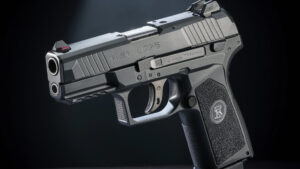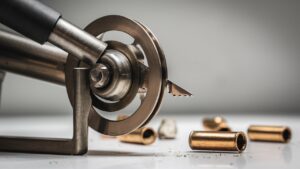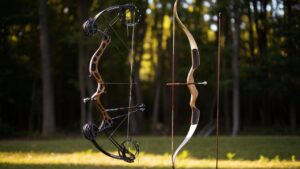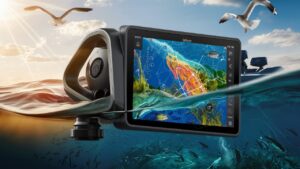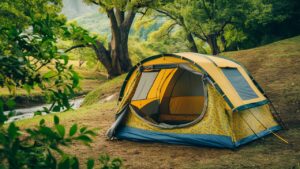To choose a CCW holster, consider factors such as concealability, comfort, retention, attachments, material, and fit. It’s important to find a holster that provides a consistent grip and draw, while also aiding in concealing the firearm.
Inside-the-waistband (IWB) holsters are a popular choice for concealed carry due to their close fit to the body, while outside-the-waistband (OWB) holsters may only be practical for certain attire. Always ensure that the holster covers the trigger and trigger guard, holds the gun securely, and aids in concealing the firearm.
We’ll explore different types of holsters and factors to consider when choosing a CCW holster.
Introduction To Ccw Holsters
Choosing the right CCW holster is crucial for a comfortable and secure concealed carry experience. There are various types of holsters to consider, each with its own advantages and drawbacks. Inside-the-waistband (IWB) holsters are popular for their close body fit, aiding in concealment. Outside-the-waistband (OWB) holsters are less practical for year-round use but can be worn with appropriate clothing. A good holster should allow for a consistent grip and easy draw, ensuring quick access to your firearm when needed. It’s important to consider factors such as retention, material, exact fit, and ease of re-holstering. Kydex, Safari Land, and Blackhawk are some popular holster brands to explore. Remember, always choose a holster that covers the trigger guard and provides secure retention to ensure safety. Experiment with different holster positions to find what works best for you.
Concealability Factors
When selecting a CCW holster, holster visibility is a crucial factor. Ensure that the holster remains concealed, especially when wearing different types of clothing. Consider the visibility of the holster with various outfits to ensure it stays discreet.
Clothing considerations are vital when choosing a holster. The holster should be compatible with different types of clothing to maintain concealment. It should not be visible or cause any bulging, ensuring a seamless and discreet carry experience.
Comfort And Wearability
When choosing a CCW holster, consider the material choices available. Look for materials that provide adjustability for comfort. It’s important to prioritize comfort and wearability in order to ensure that you can carry your firearm for extended periods without discomfort.
Retention And Security
When choosing a CCW holster, consider the retention and security it offers. Look for a holster that securely holds your firearm and covers the trigger guard to prevent accidental discharge. It should also provide a comfortable fit and aid in concealing the weapon for everyday carry.
| Retention and Security |
| Understanding Retention Levels: Ensure proper understanding of holster’s retention levels. Test your holster’s retention to assess its security. |
Ease Of Access
When choosing a CCW holster, consider the ease of access for a smooth draw. Ensure the holster provides a good master grip and comfortable concealability. Look for adjustable retention and a secure fit to keep your firearm easily accessible and well-concealed.
When it comes to choosing a CCW holster, ease of access is a crucial factor to consider. Mastering the draw is essential for quick and safe access to your firearm. Practicing re-holstering is also crucial to ensure that you can safely and efficiently return your firearm to its holster.
Consider the retention of the holster to ensure that your firearm stays secure and does not accidentally fall out. A good master grip is also essential to ensure that you can draw your firearm quickly and comfortably.
Attachments and materials are other factors to consider when choosing a CCW holster. It is essential to choose a holster that fits your firearm precisely and is comfortable to wear.
Additionally, consider the difficulty of re-holstering your firearm. You want a holster that allows you to safely and efficiently return your firearm to its holster.
In conclusion, choosing the right CCW holster requires careful consideration of factors such as ease of access, retention, materials, and re-holstering. Practice drawing and re-holstering with your chosen holster to ensure that you can access and store your firearm safely and efficiently.
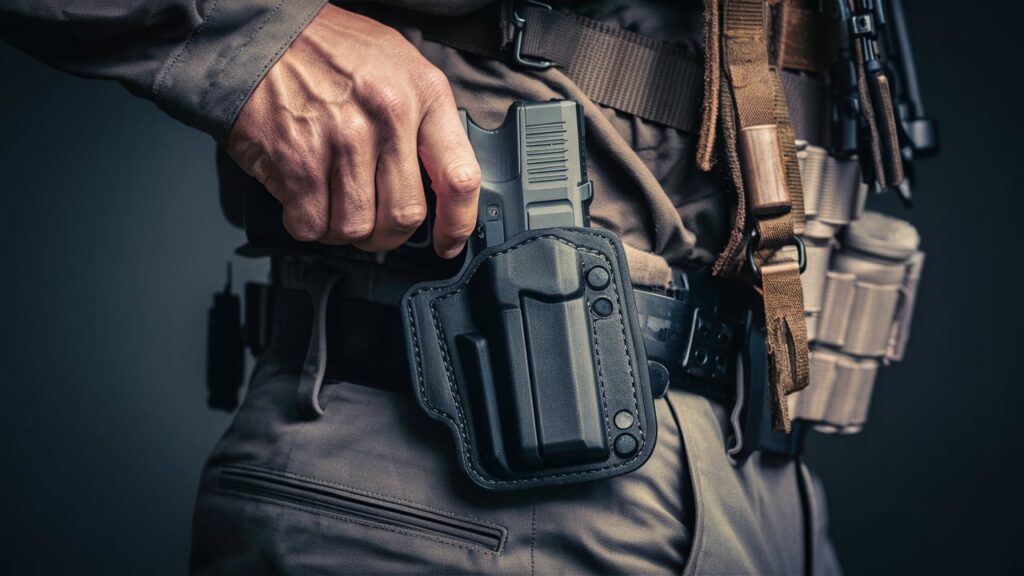
Holster Material
Leather: Durable, comfortable, but may lose shape over time. Provides good retention but requires maintenance.
Kydex: Lightweight, durable, and retains its shape. Provides excellent retention and easy maintenance.
Nylon: Inexpensive, lightweight, but less durable and may not provide consistent retention.
Pros: Leather offers comfort, Kydex provides durability, and Nylon is cost-effective. Each material has its unique benefits.
Cons: Leather may require more maintenance, Kydex can be rigid, and Nylon may lack consistent retention.
Fit And Gun Model Compatibility
Ensuring a Snug Fit: When choosing a CCW holster, it’s crucial to prioritize a snug fit for your firearm. Consider the fit and gun model compatibility to guarantee a secure and comfortable carry.
Universal vs. Custom Fit: While universal holsters offer versatility, a custom fit holster ensures a precise and secure hold for your specific firearm model. Custom-fit holsters provide optimal retention and prevent unnecessary movement.
Additional Features
When choosing a CCW holster, consider additional features such as concealability, comfort, retention, attachments, material, exact fit, and ease of re-holstering. It’s important to find a holster that works with your attire and offers a good grip and draw. Inside-the-waistband (IWB) holsters are popular for concealed carry due to their close fit and concealment advantages.
Always ensure your holster covers the trigger and trigger guard, securely holds your gun, and aids in concealing the firearm.
| Attachment Options | Sweat Guards and Comfort Features |
|---|---|
| When choosing a CCW holster, it’s important to consider the attachment options. Some holsters offer a variety of attachment options such as belt loops, clips, or even MOLLE compatibility. These options allow you to customize the holster to your specific carry needs and preferences. | Another important factor to consider is sweat guards and comfort features. Sweat guards help protect your gun from moisture and body oils, while comfort features such as padding or breathable materials can make wearing your holster for extended periods more comfortable. |
When it comes to choosing a CCW holster, there are a variety of factors to consider. In addition to retention and concealment, attachment options and comfort features are important to take into account. Holsters with multiple attachment options can be customized to your specific needs, while sweat guards and padding can help make wearing your holster more comfortable. By taking these additional features into consideration, you can choose a CCW holster that fits your needs and preferences.
Making The Final Choice
|
Choosing a CCW holster involves evaluating your needs and testing different holsters for comfort, retention, and concealability. |
Frequently Asked Questions
What Type Of Holster Is Best For Concealed Carry?
For concealed carry, the best type of holster is an inside-the-waistband (IWB) holster. It provides better concealment and allows for a good grip and draw. Outside-the-waistband (OWB) holsters are less practical and harder to conceal. Always choose a holster that covers the trigger and holds the gun securely to your body.
What Is The Most Popular Concealed Carry Position?
The most popular concealed carry position is inside the waistband, providing a secure grip and discreet concealment.
Should I Use A Holster For Concealed Carry?
Yes, using a holster for concealed carry is highly recommended. Carrying a firearm without a holster can be unsafe as it doesn’t provide secure retention, may cause the gun to fall off and there is nothing to protect the trigger guard.
A good holster should always cover the trigger and trigger guard, hold the gun securely, hold securely to your body, and aid in concealing the firearm. Choose a holster that is comfortable, has good retention, and fits your body and firearm properly.
What Is The Best Holster For Concealed Carry Shield?
The best holster for concealed carry shield is an inside-the-waistband (IWB) holster. It provides better concealment, allows for a consistent grip and draw, and is less likely to snag on clothing. Your holster should always cover the trigger and trigger guard, hold your gun securely, hold securely to your body, and aid in concealing the firearm.
It’s important to choose a high-quality holster as it’s the one thing standing between you and your ability to save your life.
Conclusion
Selecting the right CCW holster is crucial for comfort, concealment, and safety. Ensure proper fit, material, and retention for a secure and accessible draw. Consider your attire and carry position for daily use. Choose wisely as your holster plays a vital role in your self-defense strategy.
